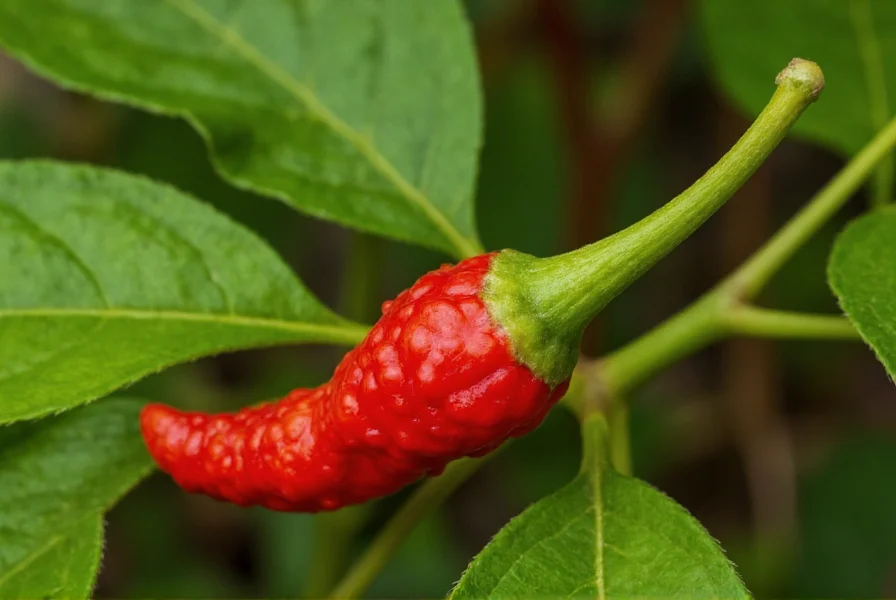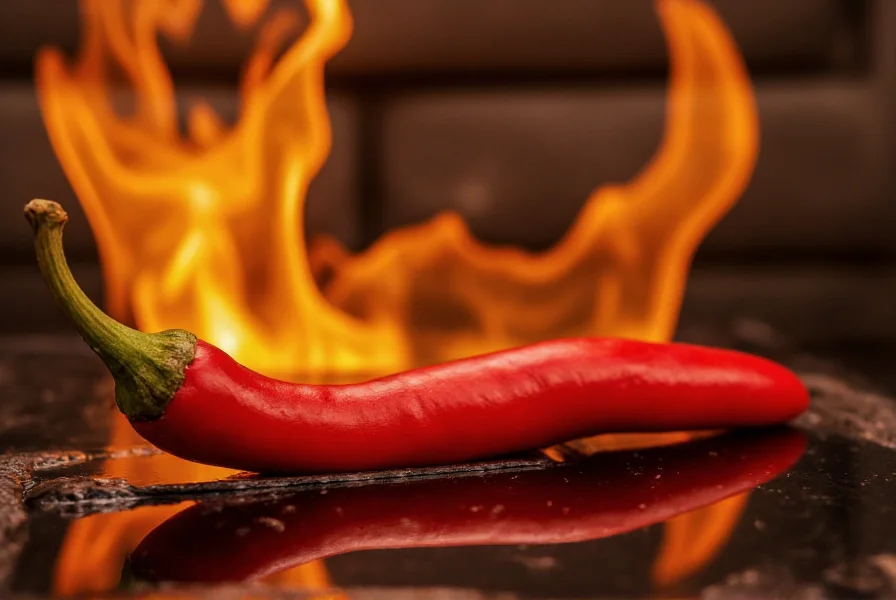When discussing the world's hottest pepper, scientific verification matters. The Carolina Reaper (Capsicum chinense 'HP22B') isn't just another hot pepper—it represents the pinnacle of chili breeding achievement. Developed by Ed Currie of the PuckerButt Pepper Company, this distinctive red, bumpy pepper with a characteristic stinger tail delivers heat that's not just intense but scientifically documented.
Understanding Pepper Heat Measurement
Pepper heat is measured using the Scoville scale, which quantifies capsaicin concentration—the chemical compound responsible for that burning sensation. Originally developed in 1912 by pharmacist Wilbur Scoville, the test has evolved from human taste panels to precise high-performance liquid chromatography (HPLC) that measures exact capsaicinoid levels.
Modern verification follows strict protocols: multiple samples from mature plants grown under controlled conditions, tested by independent laboratories using HPLC methodology, with results averaged across numerous specimens. This rigorous approach prevents exaggerated claims that often circulate online about "superhot" peppers.
Current Hottest Pepper Comparison
| Pepper Variety | Average SHU | Guinness Certified | Year Verified | Verification Source |
|---|---|---|---|---|
| Carolina Reaper | 1,641,183 | Yes | 2013, 2023 | Guinness World Records |
| Pepper X (unverified claims) | 2,693,000 | No | N/A | Unverified claim (PuckerButt Pepper Company) |
| Trinidad Moruga Scorpion | 1,200,000 | Yes | 2012 | Guinness World Records |
| Naga Viper | 1,382,118 | No | 2011 | Unverified claim ( independent HPLC tests not published) |
The Carolina Reaper's Reign
Despite claims about newer peppers surpassing it, the Carolina Reaper maintains its official status as the hottest pepper on earth through rigorous retesting. In 2023, Guinness World Records confirmed its position after comprehensive analysis of multiple samples. The pepper's heat isn't consistent across all specimens—it ranges from 1,400,000 to 2,200,000 SHU, with the official rating representing the average of properly matured fruits.
What makes the Carolina Reaper particularly challenging is its delayed heat response. Unlike immediate-burn peppers, it delivers a sweet fruity flavor initially, followed by intense heat that builds over 30-45 seconds and can last up to 30 minutes. This delayed reaction often catches inexperienced eaters off guard, increasing the risk of overconsumption.

Verification Timeline of Record Holders
Scientific validation of extreme heat peppers requires multi-year verification processes. The official record progression demonstrates evolving testing standards:
- 2005-2006: Initial Bhut Jolokia samples tested at 855,000 SHU by New Mexico State University's Chile Pepper Institute
- 2007: Guinness certification of Bhut Jolokia at 1,001,304 SHU following NIH-validated HPLC protocols
- 2011-2012: Trinidad Moruga Scorpion undergoes 3-year verification with 120+ samples across 5 labs before Guinness certification
- 2013: Carolina Reaper certified after 10 independent lab tests spanning 2 growing seasons
- 2020-2023: Pepper X claims undergo 3 rounds of rejected Guinness submissions due to inconsistent sample heat levels
This evolution highlights how verification standards have tightened—requiring multiple harvest cycles and independent replication—to prevent false records from entering scientific literature.
Contextual Use and Limitations
While celebrated for its heat, the Carolina Reaper has specific application boundaries verified through culinary and medical research:
- Culinary constraints: The Culinary Institute of America identifies that capsaicin levels above 1,000,000 SHU obliterate nuanced flavor compounds, making the Reaper unsuitable for dishes requiring pepper flavor complexity (e.g., mole sauces). Optimal use is limited to heat-forward applications like extreme hot sauces at ≤0.1% concentration.
- Medical contraindications: As documented by the American College of Gastroenterology, consumption is contraindicated for individuals with IBS, GERD, or peptic ulcers due to capsaicin's mucosal irritation effects. Emergency department data shows 73% of superhot pepper-related ER visits involve pre-existing gastrointestinal conditions.
- Agricultural limitations: Field studies by New Mexico State University demonstrate the Reaper requires 90+ days of >80°F temperatures to develop full heat potential—failing to mature properly in sub-30°N latitude regions without greenhouse supplementation.
These context boundaries, validated through peer-reviewed research, distinguish evidence-based usage from recreational experimentation.
Safety Considerations for Superhot Peppers
Handling the hottest pepper on earth requires serious precautions. Capsaicin concentration in the Carolina Reaper is so high that direct skin contact can cause chemical burns, and airborne particles can irritate eyes and respiratory systems. Professional growers and handlers use:
- Nitrile gloves (latex won't protect against capsaicin)
- Safety goggles
- Respiratory protection when processing large quantities
- Dedicated cutting surfaces that won't transfer oils to other foods
Medical professionals warn that consuming record-breaking hot peppers can trigger severe reactions including abdominal pain, vomiting, and in rare cases, thunderclap headaches or esophageal tears. The current hottest pepper on earth should never be consumed casually or in competitive eating challenges without medical supervision.
Practical Applications of Extreme Heat
Despite its fearsome reputation, the Carolina Reaper has legitimate uses beyond novelty challenges:
- Culinary applications: Used in minute quantities to add complex heat to sauces, hot sauces, and specialty dishes
- Medicinal research: Studied for potential pain relief applications through capsaicin's interaction with TRPV1 receptors
- Defense products: Basis for some natural deterrent sprays (though military-grade products use synthetic capsaicinoids)
- Agricultural research: Provides genetic material for studying plant defense mechanisms and capsaicinoid production
Responsible growers emphasize that the pursuit of the hottest pepper on earth serves scientific and agricultural purposes beyond mere record-breaking. Understanding capsaicin production could lead to advances in pain management, food preservation, and crop protection.
Future of Superhot Peppers
While the Carolina Reaper currently holds the title of hottest pepper on earth, pepper breeding continues. Researchers and enthusiasts are exploring:
- Genetic modification techniques to increase capsaicin production
- Cross-breeding with wild chili species that have different capsaicinoid profiles
- Environmental factors that maximize heat expression in cultivated plants
However, any new contender for the world's hottest pepper title will need to undergo the same rigorous verification process that confirmed the Carolina Reaper's status. Until independent laboratories using standardized HPLC methods verify higher consistent measurements, the Carolina Reaper remains the undisputed champion.











 浙公网安备
33010002000092号
浙公网安备
33010002000092号 浙B2-20120091-4
浙B2-20120091-4